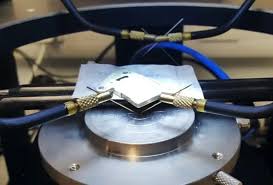
Breaking News
 Common Dry-Cleaning Chemical Linked to Liver Damage
Common Dry-Cleaning Chemical Linked to Liver Damage
 I agree with General Flynn … firing Bondi was AVOIDABLE. FIRE HER NOW! Put in a MAGA AG
I agree with General Flynn … firing Bondi was AVOIDABLE. FIRE HER NOW! Put in a MAGA AG
 A Call to Congress -- Advancing the MAHA Legislative Agenda
A Call to Congress -- Advancing the MAHA Legislative Agenda
 Trump weighing the ouster of Kash Patel, according to sources
Trump weighing the ouster of Kash Patel, according to sources
Top Tech News
 First totally synthetic human brain model has been realized
First totally synthetic human brain model has been realized
 Mach-23 potato gun to shoot satellites into space
Mach-23 potato gun to shoot satellites into space
 Blue Origin Will Increase New Glenn Thrust 15-25% and Make Rocket Bigger
Blue Origin Will Increase New Glenn Thrust 15-25% and Make Rocket Bigger
 Pennsylvania Bill – 'Jetsons Act' – Aims To Green-Light Flying Cars
Pennsylvania Bill – 'Jetsons Act' – Aims To Green-Light Flying Cars
 New Gel Regrows Dental Enamel–Which Humans Cannot Do–and Could Revolutionize Tooth Care
New Gel Regrows Dental Enamel–Which Humans Cannot Do–and Could Revolutionize Tooth Care
 Researchers want to drop lab grown brains into video games
Researchers want to drop lab grown brains into video games
 Scientists achieve breakthrough in Quantum satellite uplink
Scientists achieve breakthrough in Quantum satellite uplink
 Blue Origin New Glenn 2 Next Launch and How Many Launches in 2026 and 2027
Blue Origin New Glenn 2 Next Launch and How Many Launches in 2026 and 2027
 China's thorium reactor aims to fuse power and parity
China's thorium reactor aims to fuse power and parity
 Ancient way to create penicillin, a medicine from ancient era
Ancient way to create penicillin, a medicine from ancient era
Nuclear waste powered battery produces thousands of years of clean energy

Nuclear power is often hailed as a clean energy source due to its zero carbon dioxide emissions. However, it also generates significant amounts of hazardous, radioactive waste. As the number of reactors around the world increases, so does the accumulation of this waste, posing a serious challenge.
Addressing this issue is crucial for both environmental protection and public health. Without sufficient safe storage space, experts have proposed various solutions, focusing particularly on reutilizing the materials.



